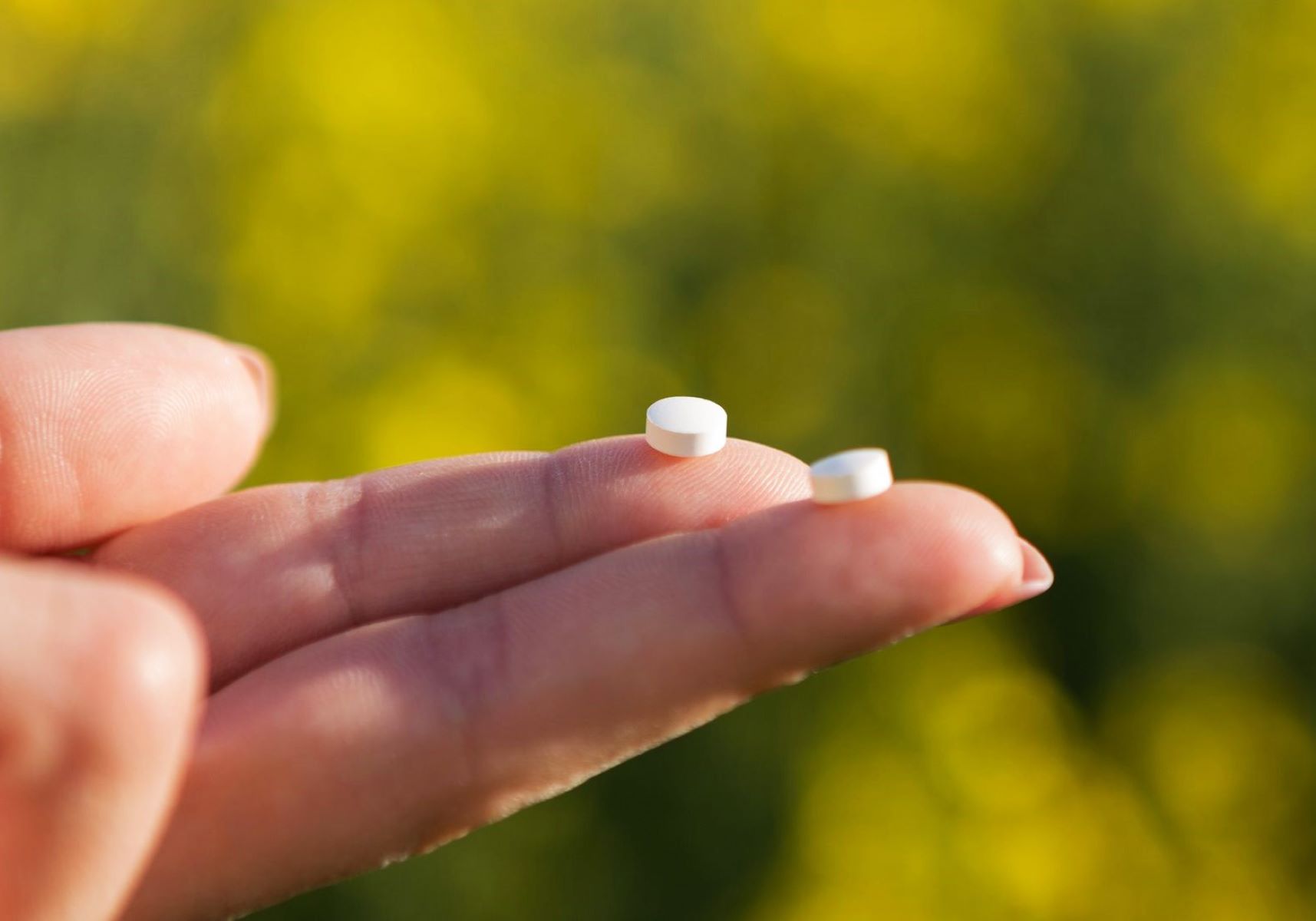Home>Health & Nutrition>Recovery>The Impact Of Antihistamines On Muscle Soreness: Do They Increase Or Decrease?


Recovery
The Impact Of Antihistamines On Muscle Soreness: Do They Increase Or Decrease?
Published: February 27, 2024
Discover the impact of antihistamines on muscle soreness and their effect on recovery. Learn whether they increase or decrease the recovery process.
(Many of the links in this article redirect to a specific reviewed product. Your purchase of these products through affiliate links helps to generate commission for Therunningadvisor.com, at no extra cost. Learn more)
Table of Contents
Introduction
When it comes to physical fitness and athletic performance, muscle soreness is a common and often unwelcome companion. Whether it's the aftermath of an intense workout or the result of a physically demanding activity, the discomfort and stiffness associated with muscle soreness can hinder one's ability to perform at their best. In the quest to alleviate this discomfort, individuals often turn to various remedies, one of which is antihistamines.
Antihistamines, commonly known for their role in managing allergies, have been a subject of interest in the realm of muscle soreness. The question arises: do antihistamines exacerbate or alleviate muscle soreness? This inquiry has sparked curiosity among athletes, fitness enthusiasts, and researchers alike, prompting investigations into the potential impact of antihistamines on muscle recovery.
In this article, we will delve into the relationship between antihistamines and muscle soreness, exploring the mechanisms through which antihistamines may influence the recovery process. By examining the findings of research studies and considering the practical implications for individuals engaged in physical activities, we aim to shed light on this intriguing intersection of pharmacology and exercise science.
As we embark on this exploration, it is important to approach the topic with an open mind, recognizing the potential complexities and nuances that may underlie the interaction between antihistamines and muscle soreness. Through a comprehensive examination of the available information, we can gain a deeper understanding of how antihistamines may impact muscle recovery and, in turn, make informed decisions regarding their use in the context of physical performance and well-being.
Understanding Antihistamines and Muscle Soreness
Antihistamines are a class of medications primarily known for their ability to alleviate allergy symptoms by blocking the action of histamine, a compound involved in inflammatory and allergic responses. However, beyond their traditional use in managing allergies, antihistamines have garnered attention for their potential impact on muscle soreness and recovery.
Muscle soreness, often experienced after strenuous physical activity, is attributed to microscopic damage to muscle fibers and the subsequent inflammatory response. This process, known as delayed onset muscle soreness (DOMS), can lead to discomfort, stiffness, and reduced muscle function, posing challenges for individuals striving to maintain peak physical performance.
The potential link between antihistamines and muscle soreness stems from the role of histamine in the inflammatory cascade. Histamine is released in response to tissue injury and is associated with the dilation of blood vessels and increased vascular permeability, contributing to the characteristic signs of inflammation, such as redness and swelling. By blocking the action of histamine, antihistamines exert their anti-inflammatory effects, which has led to speculation about their impact on the inflammatory processes underlying muscle soreness.
Moreover, histamine is also involved in the regulation of pain perception, and its release can sensitize pain receptors, potentially amplifying the sensation of muscle soreness. Given this multifaceted role of histamine in inflammation and pain modulation, the potential influence of antihistamines on muscle soreness becomes a subject of interest and inquiry.
As we seek to comprehend the interplay between antihistamines and muscle soreness, it is essential to recognize the complexity of both the inflammatory response and the mechanisms through which antihistamines exert their effects. By delving into the intricate pathways involved in these processes, we can gain a deeper appreciation for the potential impact of antihistamines on the experience of muscle soreness and the subsequent recovery.
In the following sections, we will explore the effects of antihistamines on muscle recovery, drawing insights from research studies and considering the practical implications for athletes and fitness enthusiasts. Through this exploration, we aim to unravel the complexities surrounding the interaction between antihistamines and muscle soreness, providing a nuanced perspective that can inform decision-making in the realm of physical performance and well-being.
The Effects of Antihistamines on Muscle Recovery
The potential impact of antihistamines on muscle recovery has been a subject of considerable interest, prompting investigations into the mechanisms through which these medications may influence the process of recuperation following strenuous physical activity. As individuals seek to optimize their recovery and minimize the discomfort associated with muscle soreness, the question of whether antihistamines aid or hinder this process becomes increasingly relevant.
Antihistamines, known for their anti-inflammatory properties, have been theorized to potentially alleviate the inflammatory response associated with muscle damage, thereby facilitating the recovery process. By blocking the action of histamine, these medications may mitigate the inflammatory cascade, potentially reducing the extent of tissue damage and the associated discomfort. Furthermore, the modulation of histamine's role in pain perception raises the possibility that antihistamines could alleviate the sensation of muscle soreness, promoting a more comfortable and expedited recovery.
However, the potential benefits of antihistamines must be considered in the context of their broader effects on the body. While their anti-inflammatory properties hold promise for aiding muscle recovery, antihistamines also possess sedating effects that can impact overall physical and cognitive performance. The drowsiness and reduced alertness associated with certain antihistamines may hinder an individual's ability to engage in physical activities effectively, potentially offsetting any perceived benefits in the realm of muscle recovery.
Moreover, the intricate interplay between histamine and other signaling molecules involved in the inflammatory response necessitates a comprehensive understanding of the potential downstream effects of antihistamine use. The modulation of histamine signaling may influence the overall balance of inflammatory mediators, potentially yielding complex and multifaceted outcomes that extend beyond the immediate alleviation of muscle soreness.
As individuals navigate the decision of whether to incorporate antihistamines into their recovery regimen, it is crucial to weigh the potential benefits against the broader physiological and performance-related implications. The effects of antihistamines on muscle recovery represent a dynamic interplay of anti-inflammatory, analgesic, and sedating properties, underscoring the need for a nuanced and individualized approach to their use in the context of physical performance and well-being.
In the subsequent sections, we will delve into the findings of research studies exploring the relationship between antihistamines and muscle soreness, shedding light on the empirical evidence that informs our understanding of the potential effects of these medications on the recovery process. By synthesizing these insights, we can gain a more comprehensive perspective on the intricate interplay between antihistamines and muscle recovery, empowering individuals to make informed decisions regarding their use in the pursuit of optimal physical performance and well-being.
Research Studies on Antihistamines and Muscle Soreness
Research studies investigating the potential impact of antihistamines on muscle soreness have contributed valuable insights into the complex interplay between pharmacology and exercise physiology. These studies have sought to elucidate the effects of antihistamine use on the experience of muscle soreness and the subsequent recovery process, shedding light on the potential benefits and limitations associated with these medications in the context of physical performance and well-being.
One notable area of focus in research has been the examination of antihistamines' anti-inflammatory properties and their potential implications for muscle recovery. By investigating the modulation of inflammatory markers and the extent of tissue damage following strenuous physical activity, researchers have sought to elucidate the mechanisms through which antihistamines may influence the inflammatory response associated with muscle soreness. These investigations have provided valuable insights into the potential for antihistamines to mitigate the inflammatory cascade, potentially alleviating the discomfort and stiffness characteristic of muscle soreness.
Furthermore, research studies have delved into the analgesic effects of antihistamines and their potential impact on pain perception in the context of muscle soreness. By exploring the modulation of pain signaling pathways and the subjective experience of discomfort following physical exertion, researchers have sought to unravel the potential for antihistamines to alleviate the sensation of muscle soreness, thereby promoting a more comfortable and expedited recovery. These investigations have provided nuanced perspectives on the multifaceted role of antihistamines in influencing the perception of muscle soreness, offering valuable insights into the potential mechanisms through which these medications may impact the recovery process.
Moreover, research endeavors have aimed to elucidate the broader physiological and performance-related implications of antihistamine use in the context of physical activities. By examining the sedating effects of certain antihistamines and their potential impact on alertness and cognitive function, researchers have sought to provide a comprehensive understanding of the potential trade-offs associated with the use of these medications in the pursuit of optimal muscle recovery. These investigations have underscored the need for a balanced consideration of the potential benefits and limitations of antihistamines, highlighting the importance of individualized approaches to their use in the realm of physical performance and well-being.
In synthesizing the findings of these research studies, it becomes evident that the relationship between antihistamines and muscle soreness is characterized by a dynamic interplay of anti-inflammatory, analgesic, and sedating properties. The empirical evidence derived from these investigations offers valuable insights into the potential effects of antihistamines on the recovery process, informing a nuanced understanding of their role in the context of physical performance and well-being.
Practical Implications for Athletes and Fitness Enthusiasts
The potential impact of antihistamines on muscle soreness and recovery holds significant implications for athletes and fitness enthusiasts seeking to optimize their physical performance and well-being. As individuals navigate the decision of whether to incorporate antihistamines into their recovery regimen, it is essential to consider the practical implications that stem from the complex interplay of pharmacological effects and physiological responses.
For athletes engaged in high-intensity training or competitive sports, the management of muscle soreness is a critical aspect of their overall performance and training consistency. The potential anti-inflammatory effects of antihistamines may offer a means of alleviating the discomfort associated with muscle soreness, potentially facilitating a more rapid return to training and competition. However, it is crucial for athletes to balance these potential benefits against the sedating effects of certain antihistamines, which can impact alertness and cognitive function. The decision to incorporate antihistamines into a recovery regimen should be informed by an individualized assessment of the trade-offs between pain relief and potential performance decrements.
For fitness enthusiasts engaged in regular exercise and physical activities, the experience of muscle soreness can influence adherence to training routines and overall enjoyment of physical pursuits. The potential analgesic effects of antihistamines may offer a means of enhancing comfort during the recovery phase, potentially promoting a more positive and sustainable engagement with exercise. However, it is important for individuals to be mindful of the potential sedating effects of antihistamines, which can impact energy levels and overall enjoyment of physical activities. A balanced consideration of the potential benefits and limitations of antihistamines is essential in guiding their use within the context of maintaining a consistent and fulfilling exercise regimen.
In both athletic and recreational settings, the decision to incorporate antihistamines into a recovery regimen should be guided by an individualized assessment of the potential benefits and limitations. Factors such as the specific demands of training or physical activities, the severity of muscle soreness, and the overall impact on performance and well-being should be carefully considered. Moreover, consulting with healthcare professionals or sports medicine experts can provide valuable insights into the personalized use of antihistamines, ensuring that individuals make informed decisions that align with their unique needs and goals.
By recognizing the practical implications of antihistamine use in the context of muscle soreness and recovery, athletes and fitness enthusiasts can navigate their choices with a nuanced understanding of the potential effects on performance, comfort, and overall well-being. This informed approach empowers individuals to make decisions that support their pursuit of optimal physical performance and a fulfilling engagement with physical activities.
Read more: The Impact Of Running On Muscle Hernia
Conclusion
In conclusion, the relationship between antihistamines and muscle soreness represents a complex interplay of pharmacological effects, inflammatory responses, and the subjective experience of discomfort following physical exertion. The potential impact of antihistamines on muscle recovery has been a subject of considerable interest, prompting investigations into their anti-inflammatory, analgesic, and sedating properties. As individuals seek to optimize their recovery and alleviate the discomfort associated with muscle soreness, the decision of whether to incorporate antihistamines into a recovery regimen necessitates a nuanced understanding of their potential benefits and limitations.
Research studies have provided valuable insights into the mechanisms through which antihistamines may influence the inflammatory response associated with muscle soreness. By elucidating the modulation of inflammatory markers and pain signaling pathways, these investigations have shed light on the potential for antihistamines to mitigate the discomfort and stiffness characteristic of muscle soreness. However, the sedating effects of certain antihistamines raise considerations regarding their impact on alertness and cognitive function, highlighting the need for a balanced assessment of their use in the context of physical performance and well-being.
For athletes and fitness enthusiasts, the decision to incorporate antihistamines into a recovery regimen should be guided by a comprehensive evaluation of the potential trade-offs between pain relief and performance-related implications. While the anti-inflammatory and analgesic effects of antihistamines may offer a means of alleviating the discomfort associated with muscle soreness, the potential sedating effects necessitate a careful consideration of their impact on overall physical and cognitive function. Individualized approaches, informed by the specific demands of training or physical activities, can empower individuals to make decisions that align with their unique needs and goals.
In navigating the complexities surrounding the use of antihistamines in the context of muscle soreness and recovery, consulting with healthcare professionals or sports medicine experts can provide valuable guidance and personalized insights. By integrating empirical evidence with individualized considerations, individuals can make informed decisions that support their pursuit of optimal physical performance and a fulfilling engagement with physical activities.
Ultimately, the potential impact of antihistamines on muscle recovery underscores the need for a balanced and nuanced approach that recognizes the multifaceted nature of their effects. By fostering a deeper understanding of the interplay between pharmacological properties and physiological responses, individuals can navigate their choices with clarity and informed decision-making, empowering them to optimize their recovery and overall well-being in the realm of physical performance.















